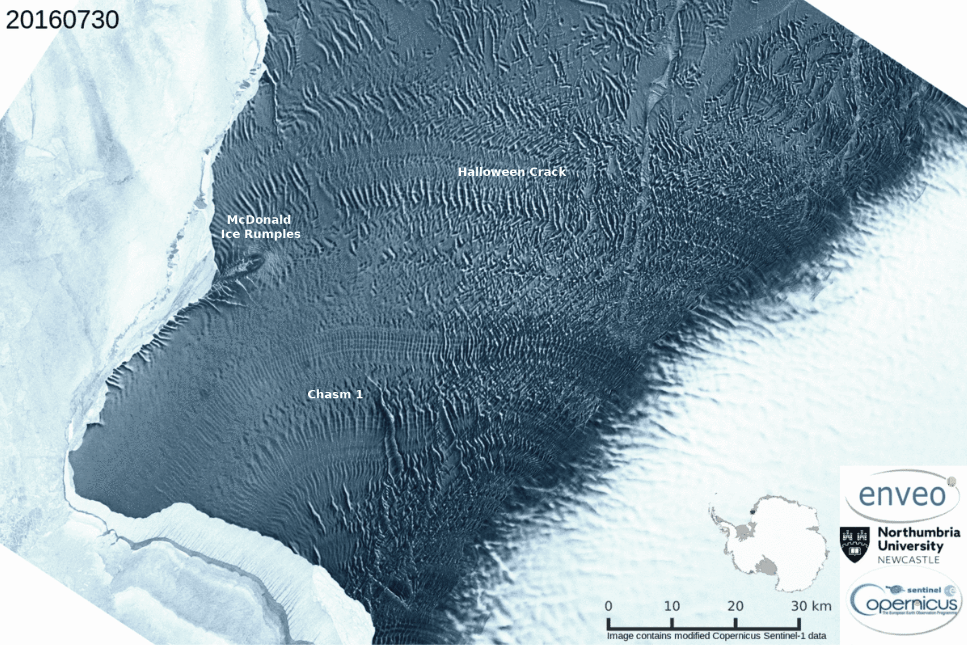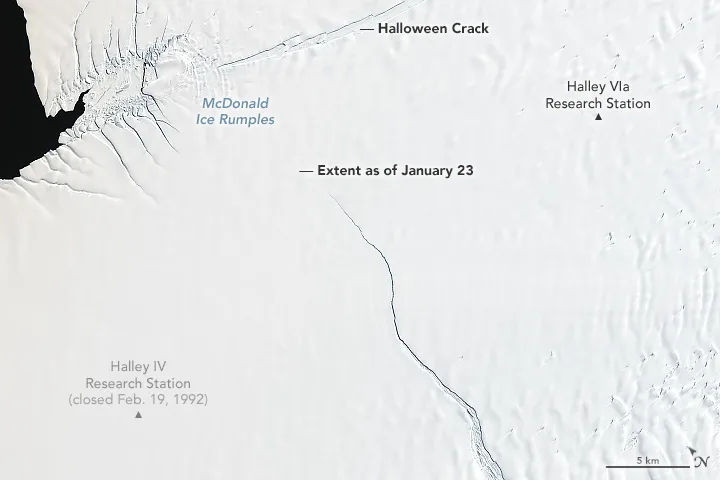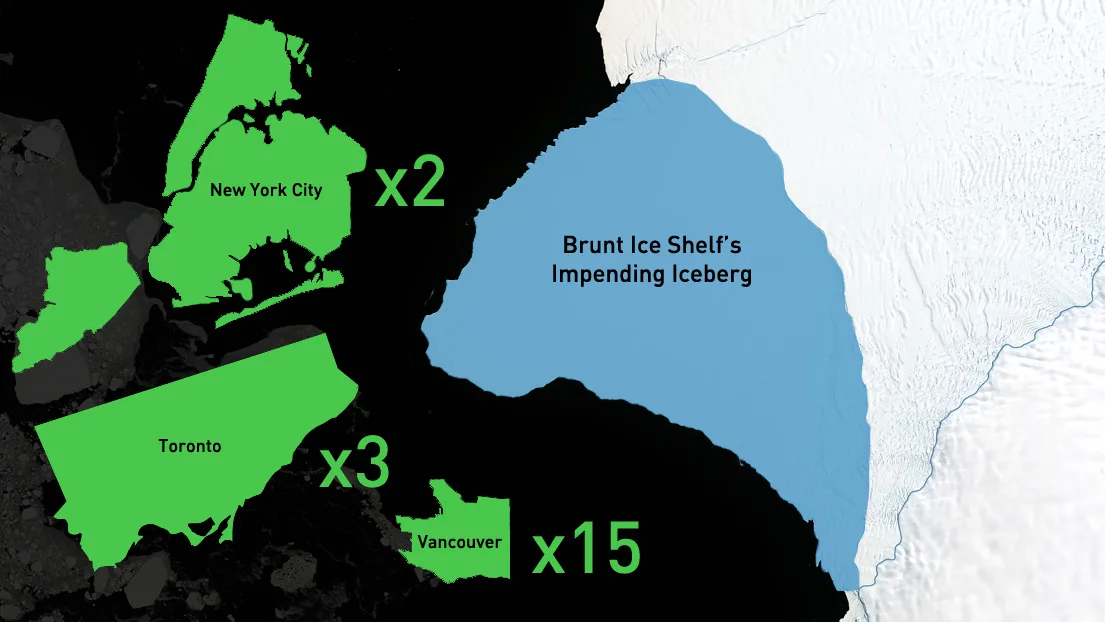
Iceberg 15x size of Vancouver will soon break off Antarctica
An immense crack running through the Brunt Ice Shelf is inching its way towards producing the next big iceberg to break off Antarctica.
Scientists have been keeping a close satellite eye on one corner of the Antarctic ice sheet, known as the Brunt Ice Shelf.
This giant slab of ice, which floats out on the water, while still being attached to the ice on land, sits across the Weddell Sea from where the Larsen C Ice Shelf calved off a New Brunswick-sized iceberg just two years ago.
Researchers from Northumbria University have been monitoring the movement of the Brunt Ice Shelf for some time now, and particularly since October of 2016. This is when they spotted on satellite imagery, the beginnings of an immense crack, now known as the Halloween Crack.
Shortly after this rift began to spread backward through the ice shelf, another crack, known as Chasm 1 - which had been dormant for some 35 years - began to spread towards the McDonald Ice Rumples, the region where the Halloween Crack originated.

The Brunt Ice Shelf, via enhanced images from the Sentinel-1 satellite, shows the spread of the Halloween Crack, Chasm 1 and the McDonald Ice Rumples, which will soon result in an immense iceberg calving off into the Weddell Sea. Credit: Enveo/Northumbria University/Coperincus
As of January 23, 2019, NASA had tracked Chasm 1 to within about 5-7 kilometres of the McDonald Ice Rumples.

This detailed view shows the northward expanding rift getting close to the McDonald Ice Rumples and the Halloween crack. Credit: NASA Earth Observatory
According to National Geographic, as of the end of March, the tip of Chasm 1 was only around 4 kilometres away from the ice rumples, and Bert Wouters, from Utrecht University in the Netherlands, said that the crack was advancing at a rate of about 150 metres per week, in April.
NASA says that when Chasm 1 finally links up with the other two features, it will result in roughly 1,700 square kilometres of ice floating off into the Weddell Sea.
That's about twice the area of New York City, three times the size of Toronto, and nearly 15 times bigger than downtown Vancouver!

A comparison of this impending iceberg to New York City, Toronto and Vancouver. Credit: NASA Earth Observatory/Google/Scott Sutherland
While this is likely the largest ice calving that we've ever seen from the Brunt Ice Shelf, going back to 1915, it isn't necessarily all that big compared to the other icebergs we've seen calve off of Antarctica.
For comparison, Iceberg A68, which broke off the Larsen C Ice Shelf in June of 2017, was around 5,880 square kilometres in size, just slightly bigger than Prince Edward Island, and it held enough frozen water to fill Lake Erie twice over.
Then, in October of 2018, the Pine Island Glacier, on the other side of the Antarctic Peninsula from the Weddell Sea, shed enough ice to cover Manhattan five times over.
While there is bound to be speculation about the impending new iceberg from the Brunt Ice Shelf being the result of climate change in Antarctica, the researchers are convinced it is just a normal process for this particular ice shelf.
"We recognise that climate change is a serious problem which is having an impact around the world, and particularly in the Antarctic," Professor Hilmar Gudmundsson of Northumbria University said in a press release last month. "However, there is no indication from our research that this particular event is related to climate change."
What happens to the ice shelf after this calving is, at the moment, unknown. In some cases, such as when there were similar large calving events on the Larsen A and B ice shelves, across the Weddell Sea, the rest of the ice shelf quickly destabilized and collapsed, falling apart into sea ice.
"The near-term future of Brunt Ice Shelf likely depends on where the existing rifts merge relative to the McDonald Ice Rumples," Joe MacGregor, a glaciologist at NASA's Goddard Space Flight Center, told NASA's Earth Observatory. "If they merge upstream (south) of the McDonald Ice Rumples, then it's possible that the ice shelf will be destabilized."
Sources: NASA Earth Observatory | Northumbria University | Enveo | National Geographic | NOAA







